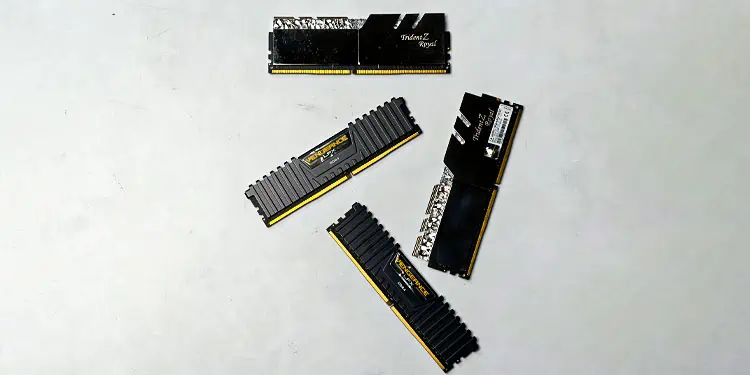Yes! More RAM can make a significant difference in the performance of a computer system, especially in tasks that require heavy memory usage.
Then more RAM must always be better, right? Well, it depends on your specific use case and system configuration. Whether or not the system is low on memory may also be a determining factor.
If you only use the PC for casual internet browsing, there is no point in using memory with high capacity unless the system is constantly running out of RAM.
For example, if you have a system with 16GB memory and at maximum it uses 10GB on full load, upgrading to 32 GB memory will not make much difference. Here, upgrading means about 22GB of memory is wasted.
To determine if more RAM is better for your specific scenario, here is a detailed explanation that should help you make an informed decision.
When Do You Need More RAM
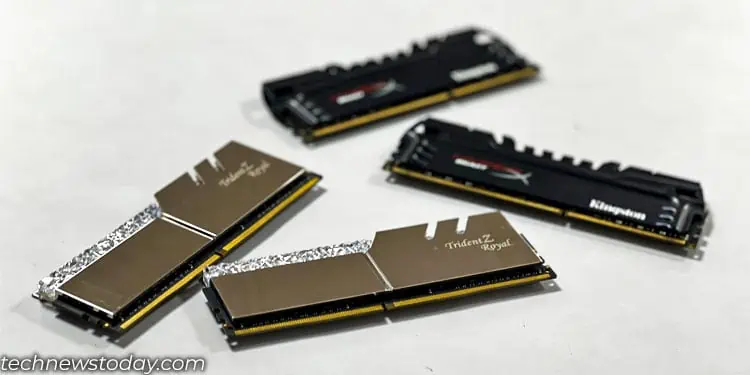
Multitasking
More RAM allows you to run multiple applications simultaneously without slowing down your system. If you’re like me, working with several terminal windows, browsers, and applications at once, more RAM can be a lifesaver.
Heavy Applications and Rendering
If you work with memory-intensive applications like virtual machines, video editing software, or large databases, additional RAM can significantly improve performance.
While RAM doesn’t directly reduce render times (as it’s the CPU/GPU doing the rendering), having sufficient RAM is essential for handling larger scenes and high-resolution videos.
Without enough RAM, the system might resort to disk swapping or even crash, leading to increased render times or failure to complete the render.
Virtual Machines
If you’re like me and often run virtual machines for testing different operating systems or software, having extra RAM is a game-changer.
It allows you to run multiple virtual machines simultaneously. Additionally, you can allocate more memory to these virtual environments, which will improve their performance.
High Traffic Web Servers
For web servers handling many concurrent connections, having more RAM can facilitate efficient handling of requests, particularly if the web applications are memory-intensive.
Real-Time Data Processing
In a real-time data processing environment, where latency is a thing, more RAM can help in maintaining real-time constraints.
Gaming
Modern games can require a significant amount of memory, especially if you’re playing at high settings.
When the system is out of RAM, the data is constantly being fetched to and from the page file. This delay/latency causes sudden frame drops and random stuttering. More RAM can prevent stuttering and slowdowns.
In such cases, upgrading RAM will not increase your average FPS, but it does improve your 1% and 0.1% lows in frame rates, giving you a smooth experience.
Personally, I used to run GTA V on an 8 (1×8) GB HP laptop with integrated graphics. Although the FPS reached about 30-35, it was not a good experience as the 1% and 0.1% lows were around the range of 2 to 10 FPS.
Once I upgraded my laptop memory to 16 (2×8)GB memory, I saw a huge boost in the 1% lows, making the game run smoother than before.
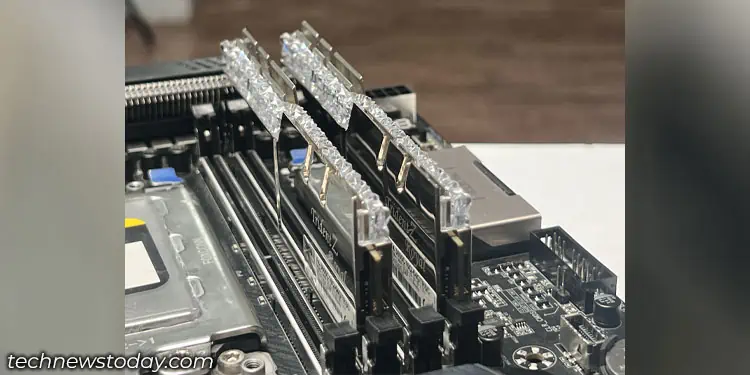
8GB Vs 16GB Memory Gaming Benchmark
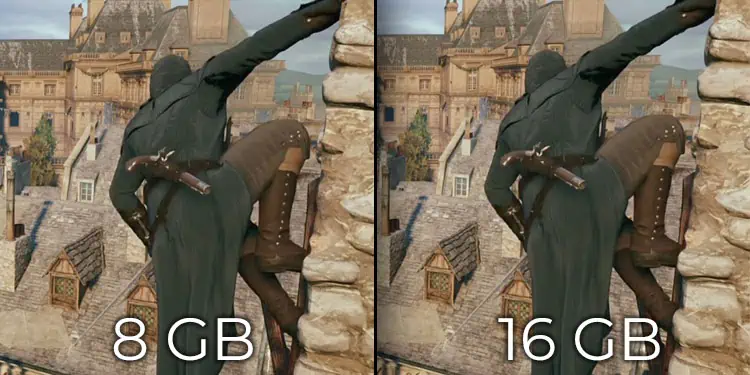
To give you exact information on how much of a performance boost you would get with a RAM upgrade, we performed a gaming benchmark. The most reliable way to compare performance on a lower and a higher capacity RAM is through gaming.
So, here is a benchmark test I performed on two identical systems, one with 8GB RAM and another with 16 (2×8) GB RAM. Below is the specification list of the test system.
- CPU: Ryzen 5 5600
- GPU: AMD RX 6650 XT
- SSD: Samsung Evo Plus 2TB
- OS: Windows 11 22H2
Games on both 8GB and 16 GB were tested on the same graphics preset and the system was not overclocked except for enabling X.M.P.
| FPS on 8GB (1x8GB) | FPS on 16GB (2x 8GB) | ||
| Red Dead Redemption 2 | 1% low | 47 | 59 |
| Avg FPS | 80 | 95 | |
| Marvel’s Spiderman | 1% low | 68 | 72 |
| Avg FPS | 98 | 125 | |
| Marvel’s Spiderman: Miles Morales | 1% low | 43 | 79 |
| Avg FPS | 75 | 105 | |
| GTA V | 1% low | 65 | 75 |
| Avg FPS | 99 | 115 | |
| God of War | 1% low | 54 | 78 |
| Avg FPS | 97 | 106 | |
| Cyberpunk 2077 | 1% low | 60 | 65 |
| Avg FPS | 75 | 84 | |
The reason for this performance boost is due to two reasons, RAM configuration, and RAM capacity. The 8GB system had one stick of 8GB RAM and the second one had 2 sticks of 8 GB.
The system with 8GB RAM only ran on a single channel. Using two memory sticks allowed the system to run on dual channel mode, thus increasing the memory bandwidth, which also gave our system a huge performance boost.
As you can see, I also had my average FPS increased. This was due to the dual-channel memory. If I had used a single stick of 16 GB RAM, the average FPS would not have seen such improvement.
Higher memory really shines on the 1% lows FPS. 1% lows is the lowest FPS you get 1% of time. This means 99% of the time the average FPS is beyond 1% lows.
In above Spiderman: Miles Morales benchmark, 1% low is 43 and Avg FPS is 73. This means, 99% of the time, the FPS is 73 and on the remaining 1%, we got 43 FPS.
Although it might not seem like a huge difference, a higher FPS value in 1% lows means the game feels much smoother. And playing on a higher resolution monitor, you actually see the game run a lot smoother.
When You Don’t Need More RAM
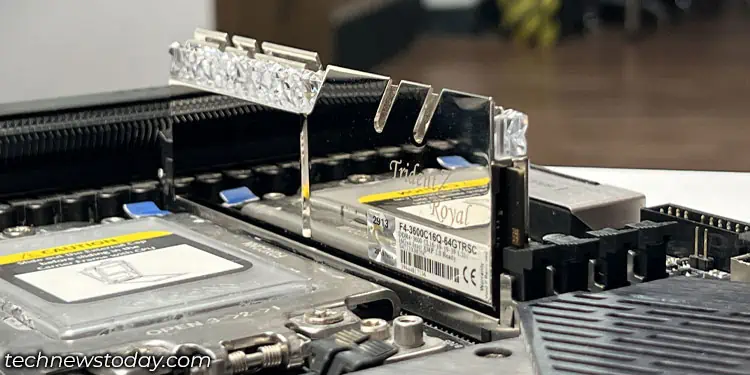
Basic Use
For basic tasks like word processing, email, and light web browsing, most modern computers come with enough RAM, and adding more might not yield noticeable improvements.
System Limitations
Older systems might not support the latest RAM standards or might have limitations on the maximum amount of RAM they can utilize.
For example, if you’re working on an older 32-bit system, adding more RAM beyond this limit won’t be beneficial. 32-bit operating systems have a limitation in addressing more than 4GB of RAM.
Cost vs Benefit
Another thing to keep in mind is the price-to-performance ratio. You will need to find the sweet spot such that it’s enough for a couple of years into the future while maximizing system performance and keeping the price minimum.

